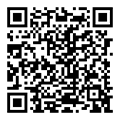The following text summarizes information provided in the video.
Overview
A tracheostomy is a surgically created airway that is kept open with a breathing tube, or tracheostomy tube. The tube is inserted directly into the trachea through an incision in the neck. A tracheostomy can be created with an open surgical or a percutaneous dilation technique1 and can take place in the operating room or at the patient’s bedside. The open technique involves dissection of the anterior pretracheal tissue and insertion of a tracheostomy tube under direct visualization. The percutaneous technique can be performed quickly and safely at the bedside with the use of a modified Seldinger technique and bronchoscopic guidance.2 This approach is associated with fewer bleeding complications than open tracheostomy and similar long-term morbidity.1
Indications and Contraindications
Tracheostomy should be considered in patients with acute respiratory failure who require prolonged mechanical ventilation — defined as ventilation for 7 days or more — and who are expected to have a meaningful recovery.3 Tracheostomy decreases the need for sedation and facilitates weaning from a ventilator.1,3 Additional indications include upper airway obstruction (including vocal cord paralysis), the need for airway protection in patients with conditions such as neurologic disease or traumatic brain injury, and the need for more effective pulmonary hygiene, including the use of recruitment maneuvers and methods for clearing the airways of secretions.
Neither previous tracheostomy nor other types of neck surgery are contraindications. In fact, percutaneous tracheostomy may be preferred in patients whose surgical planes have been distorted. Absolute contraindications to percutaneous tracheostomy include cervical instability, uncontrolled coagulopathy, and infection at the planned insertion site. Relative contraindications include difficult anatomy (short neck, morbid obesity, minimal neck extension, or tracheal deviation) and severe respiratory disease resulting in the inability to withstand periods of apnea or in the loss of positive-pressure ventilation.
Procedural Modifications in Patients with Covid-19
Percutaneous tracheostomy in patients with coronavirus disease 2019 (Covid-19) includes the use of complete neuromuscular paralysis to minimize the cough reflex and involves periods of apnea when the ventilatory circuit is considered to be open. The procedure requires a highly specialized team that minimizes the number of personnel needed and the use of full personal protective equipment (PPE).
Equipment
Performance of a bedside tracheostomy requires medications for sedation and paralysis, a flexible bronchoscope (preferably a video bronchoscope, since it allows all personnel in the room to visualize the positioning of the oral endotracheal tube), a bronchoscope attachment for the ventilator, silicone lubricant (which allows the bronchoscope to pass easily down the oral endotracheal tube), saline, surgical lubricant, a dissecting tool (e.g., tonsil forceps or curved hemostat), a tracheostomy tube and tracheostomy collar, and a percutaneous tracheostomy kit. This kit generally includes a number 15 surgical scalpel blade, an introducer needle, a guidewire, a small tracheal dilator, a protective sheath, a single-stage progressive tracheal dilator, a tracheal loading trocar, and a small slip-tip syringe.
The size of the tracheostomy tube selected should be appropriate for the patient. Percutaneous tracheostomy kits are designed to be used with a specialized tracheostomy tube that loads onto a dilator. In practice, however, any tracheostomy tube can be inserted in a percutaneous fashion. A thin, flexible tracheostomy tube is useful because it maximizes the diameter of the airway while minimizing pressure on the tracheal wall.
Preparation
Minimizing the exposure of health care personnel to aerosol-generating procedures is critical when treating patients with Covid-19. To safely perform percutaneous tracheostomy, a minimum of three medical personnel must be present: the bedside surgeon, a bronchoscopist, and a respiratory therapist. Percutaneous tracheostomy is considered to be an aerosol-generating procedure. All personnel in the room must be wearing PPE and should observe the policies at their institution regarding the use of PPE during aerosol-generating procedures.
Patient and Provider Positioning
The patient should be placed in the supine position. Placement of a shoulder roll beneath the patient’s scapulae can help to extend the neck and improve exposure of the anterior neck. The patient’s head should be supported by a towel or small pillow, if needed. The surgeon should be able to comfortably access the patient’s neck while standing; the height of the bed should be adjusted as needed.
Team members should be positioned around the bed in a manner that allows them to carry out the necessary procedures safely, effectively, and efficiently. The respiratory therapist should stand at the head of the bed, a position that allows direct control of the airway and provides access to the ventilator. The bronchoscopist should be positioned at the patient’s left side, next to the bronchoscopy cart and video monitor. Although the surgeon is generally positioned on the patient’s right side, with a direct view of the bronchoscopy monitor, a left-handed surgeon may prefer to be on the patient’s left side, with the bronchoscopist on the right side.
Identification of Anatomical Landmarks
 Tracheal Anatomy and Location for Placement of the Tracheostomy Tube.
Tracheal Anatomy and Location for Placement of the Tracheostomy Tube.
Palpate the neck to identify key anatomical landmarks. These include the thyroid cartilage, the cricoid cartilage, and the sternal notch. The ideal location for placement of the tracheostomy tube is between the second and third tracheal rings (Figure 1). Palpate the neck to identify the pulse of a high-riding innominate artery that may overlie the area of the planned incision. Open tracheostomy is preferred in patients with a high-riding innominate artery.
Procedure
Before starting the procedure, the team should take a time-out to verify the patient’s identity and the procedure to be performed. After the time-out, the patient’s nurse should administer a short-acting paralytic agent and, if necessary, additional sedation. Inadequate paralysis increases the risk of inadvertent extubation when the oral endotracheal tube is being manipulated. After administering the agent, the nurse should step out of the room to minimize exposure but should be immediately available and ready to reenter the room if assistance is needed.
Sterilize and drape the anterior neck, making sure that the draping will allow easy access to the oral endotracheal tube. Make a 2-to-3-cm vertical incision in the neck that directly overlies the trachea and is below the cricoid cartilage. Bluntly dissect the pretracheal tissue with a dissecting tool until the trachea is palpable. In patients who require therapeutic anticoagulation or in whom there is any risk of bleeding, it may be advisable to place a purse-string suture around the tracheostomy incision. The purse-string suture is placed but not tied during this step. It will be tied to provide additional hemostatic control once the tracheostomy tube has been inserted. The suture is generally removed on the second postoperative day if there is no evidence of bleeding. The tracheostomy tube itself should not be sutured in place. Suturing a tracheostomy tube results in skin ulceration and does not prevent inadvertent decannulation.
Ask the respiratory therapist to induce apnea by placing the ventilator on standby. Disconnect the oral endotracheal tube from the ventilator circuit and attach a bronchoscope adaptor to the tube. Insert the bronchoscope into the adaptor, reconnect the circuit, and resume ventilation. Advance the bronchoscope into the airway. Briefly survey the trachea and clear any obstructing secretions.
Once all team members are ready to proceed, advance the bronchoscope into the oral endotracheal tube until the camera is aligned with the end of the tube. At that point, the respiratory therapist should again induce apnea and then deflate the tube cuff. The respiratory therapist and the bronchoscopist together then slowly withdraw the tube and the bronchoscope simultaneously until the subglottic landmarks are visible. Palpation of the anterior trachea by the surgeon can facilitate identification of these landmarks. Some practitioners use transillumination (i.e., visualization of the bronchoscopic light through the skin) to facilitate the positioning of the tube.
The bronchoscope is kept within the oral endotracheal tube at all times to ensure control of the airway. Precise communication and coordinated movement between the respiratory therapist and bronchoscopist are crucial to the prevention of accidental extubation.
Once the oral endotracheal tube has been withdrawn to an appropriate location, perform the tracheostomy, using the Seldinger technique. Insert the introducer needle through the anterior wall of the trachea under direct bronchoscopic visualization. The needle should be inserted at the level of the second tracheal ring, perpendicular to the trachea, with the bevel facing down. Placement of the needle bevel in this downward position will help to direct the guidewire into the distal trachea. It is critical to avoid damaging the balloon on the oral endotracheal tube. In the event that the patient’s condition becomes clinically unstable or there is difficulty performing the tracheostomy, as long as the balloon is intact, the oral endotracheal tube is simply advanced to its original location and normal ventilation is resumed. Additional supplies or personnel can be gathered. If the balloon is compromised, so too is the ability to provide positive pressure ventilation. A new airway must be expeditiously established by means of either a tracheostomy or oral endotracheal intubation with an intact tube.
 Insertion of the Introducer Needle and Guidewire.
Insertion of the Introducer Needle and Guidewire. Tracheal Dilation.
Tracheal Dilation.Feed the guidewire through the needle and visualize it while advancing it distally toward the carina. Advance the wire slightly beyond the carina (Figure 2). Remove the needle over the wire, keeping the wire in place within the trachea at all times. Advance the small tracheal dilator over the wire to dilate the tract. Remove the small tracheal dilator and, with the protective sheath loaded, advance the single-stage progressive dilator over the wire (Figure 3). Remove the progressive dilator, keeping the wire and the protective sheath in place. (Markings on the side of the progressive dilator guide the depth to which it is inserted.) Next, insert an appropriately sized tracheostomy tube directly into the trachea over the wire and protective sheath. If using a flexible tracheostomy tube, insert the tube with the curve directed toward the patient’s head. Once the tube in the patient’s trachea is visualized, rotate the tube 180 degrees. This will position the tube in its normal orientation and prevent it from creating a pretracheal plane. Alternatively, a nonflexible tracheostomy tube can be loaded onto an insertion trocar and advanced over the wire and the protective sheath into the trachea.
Once the tube is in place, remove the protective sheath, wire, and trocar (if used), inflate the tracheostomy cuff, connect the circuit to the tracheostomy tube, and resume ventilation. The presence of end-tidal carbon dioxide confirms placement in the airway. Alternatively, the bronchoscope can be reinserted through the tracheostomy tube to visually confirm placement within the airway. The position of the tracheostomy should be confirmed with the patient’s head in flexion and extension. Only then should the oral endotracheal tube be removed.
Once satisfactory placement is confirmed, secure the tracheostomy tube with a tracheostomy collar. If a purse-string suture was placed, tie down the suture to close the skin incision around the tracheostomy. Once the patient is appropriately ventilated through a secured tracheostomy tube, the oral endotracheal tube may be removed.
Loss of the Airway
The most serious procedural risk associated with endotracheal intubation is loss of the airway. This typically occurs in one of two ways: the patient coughs during manipulation of the endotracheal tube or the balloon on the tube is damaged. Adequate neuromuscular paralysis should prevent the patient from coughing. An intact balloon is critical to the safety of the procedure. If the patient’s condition becomes unstable or if there is difficulty placing the tracheostomy, the oral endotracheal tube should be advanced to its original location and ventilation resumed. If the balloon is compromised, the provision of positive pressure ventilation is compromised. Either a new airway must be established expeditiously by creating a tracheostomy or by replacing the compromised endotracheal tube with an intact tube through oral endotracheal intubation.
Aftercare
In the immediate postoperative period, the tracheal stoma requires regular assessment and wound management, including frequent cleaning of the skin around the stoma and changes in dressing as needed. Pulmonary hygiene, ventilator weaning, and eventual decannulation should be performed in accordance with institutional guidelines and the clinical status of the patient. Maturation of the tracheal stoma occurs after approximately 7 days, at which time the tracheostomy tube may be replaced or downsized, depending on the clinical needs of the patient. The surgical team typically performs the first such exchange.
In patients with Covid-19, the focus of early postprocedural care is to ensure minimization of aerosol generation. Effective measures include keeping the cuff inflated, using a closed-suction catheter when clearing the airway, and, if possible, avoiding the use of humidified oxygen. Ideally, deflation of the cuff, replacement of the tracheostomy tube, and initiation of a plan for decannulation should be deferred until the results of patient testing for Covid-19 are negative.
Complications
Early complications after placement of a tracheostomy tube include bleeding and obstruction or dislodgement of the tracheostomy tube.2 Bleeding is the most common complication, but it is usually self-limited or can be controlled with the use of measures such as the application of pressure or the use of hemostatic agents. The purse-string method described above may help to control bleeding from the skin.
Inadvertent decannulation and obstruction of the tracheostomy tube are rare, but should they occur, both can be managed by securing the airway through oral endotracheal intubation. If obstruction of the tube cannot be cleared with standard suctioning techniques or if the tube becomes dislodged, the airway should be secured by means of orotracheal intubation; insertion of a new tracheostomy tube through a tract that has not fully matured should not be attempted.
Late complications after tracheostomy include tracheoinnominate fistula, tracheoesophageal fistula, and tracheal stenosis.4 The development of fistulas is a rare complication that requires surgical consultation. Tracheoinnominate fistulas are rare and life-threatening. If a fistula is suspected, immediate operative repair must be performed, as it affords the only chance of survival.5Tracheoesophageal fistula typically occurs in patients with an esophageal foreign body, such as a feeding tube.4 Operative repair is indicated after the patient’s critical illness has resolved. Tracheal stenosis can occur anywhere along the trachea, from the tracheal stoma to the cuff of the tracheostomy tube. Stomal stenosis results from the trauma of tube insertion or excessive movement at the entry site. Cuff stenosis is related to mucosal ischemic injury from high cuff pressures. Tracheal dilation is palliative; definitive treatment requires resection and reconstruction.6
Summary
Percutaneous tracheostomy can be safely performed at the bedside in patients with a prolonged need for mechanical ventilation. In patients with Covid-19, this procedure can be modified to minimize both aerosol generation and exposure to staff.
Disclosure forms provided by the authors are available with the full text of this article at NEJM.org.
No potential conflict of interest relevant to this article was reported.
This article was published on October 28, 2020, at NEJM.org.
We thank Drs. Sahael Stapleton, Cindy Bonilla, and David McCarthy for their invaluable assistance in the management of patient care and the members of the nursing and respiratory therapy staff who assisted in care.
Author Affiliations
From the Department of Surgery (D.A.H.) and Division of Thoracic Surgery (A.L.A., H.G.A.), Massachusetts General Hospital, and Harvard Medical School (D.A.H., A.L.A., H.G.A.) — both in Boston.
Address reprint requests to Dr. Hashimoto or Dr. Auchincloss at Massachusetts General Hospital, 55 Fruit St., Founders 7, Boston, MA 02114, or at dahashimoto@mgh.harvard.edu or hauchincloss@mgh.harvard.edu.




